Putting our newest device for OD-measurements on GitHub, i thought of reflecting a bit on the last 5 years of developments of the turbidity meter, also known as Kafi-Schnapps detektor or photospectrometer. The device measures the absorption of light through a defined volume of a sample. Part of the light intensity is absorbed and the transmitted light is detected using a simple light sensor (LDR). Using specific light sources (LED of different colors) and colorimetric tests a large variety of experiments can be performed ranging from environmental monitoring, water quality, bacterial growth measurements or bio-chemical assays. And it can also be used a synth for bio-sonifiation!
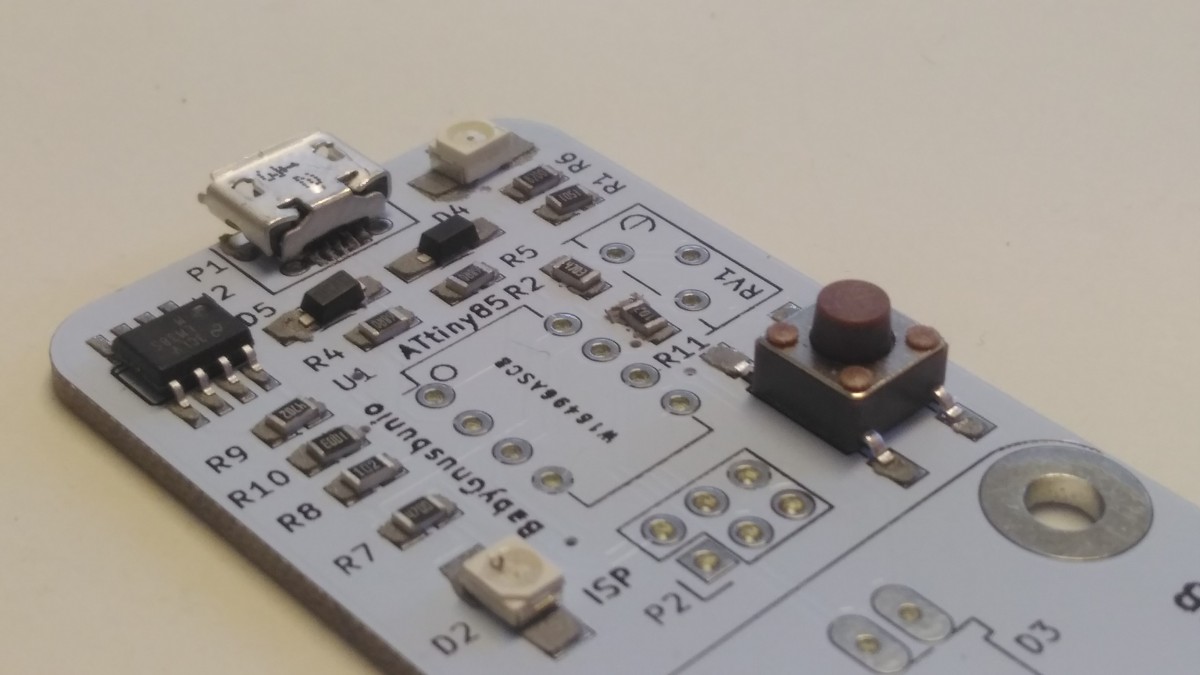
TurbiGnUSB, Shenzhen made board with voltage and current regulation, based on the BabyGnusbuino aka CocoMake7 bootloader. Now on GitHub!
The Beginning Spring 2011: Connecting some data-sensing to the net, but what?
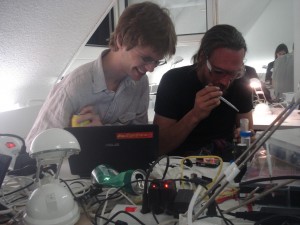 During a 24h pachube hackathon in the MechArtLab, Zurich, in 2011 we were focusing on IoT and live data streaming using (or not using) pachube. Geeking around with arduinos and LEDs and the newly developed idea of the Kresse Shield, dusjagr built a first prototype of a turbidity sensor shield using a cheap red laser and an LDR, sending the data to PD using a serial connection and from there further to the internet. The Kresse-Shields have then be further developed into a whole concept of inspiring arduino geeks into making their own laboratory instruments as Lab-on-an-Arduino. The shield itself comes completely emtpy, just pins to connect to the Arduino and a platform to start building whatever you like!
During a 24h pachube hackathon in the MechArtLab, Zurich, in 2011 we were focusing on IoT and live data streaming using (or not using) pachube. Geeking around with arduinos and LEDs and the newly developed idea of the Kresse Shield, dusjagr built a first prototype of a turbidity sensor shield using a cheap red laser and an LDR, sending the data to PD using a serial connection and from there further to the internet. The Kresse-Shields have then be further developed into a whole concept of inspiring arduino geeks into making their own laboratory instruments as Lab-on-an-Arduino. The shield itself comes completely emtpy, just pins to connect to the Arduino and a platform to start building whatever you like!
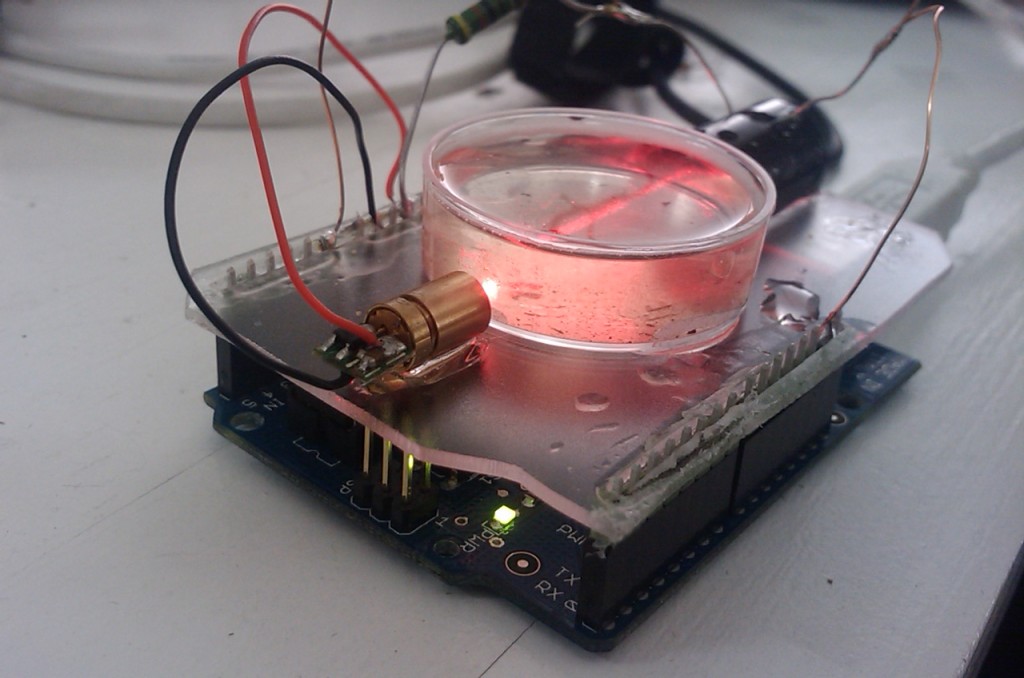
Kresse Shield 1.0: build your own lab instruments on an Arduino
Making it Cheap X-Mas 2012: Babygnusbuino by a.n.y.m.a. enters the stage
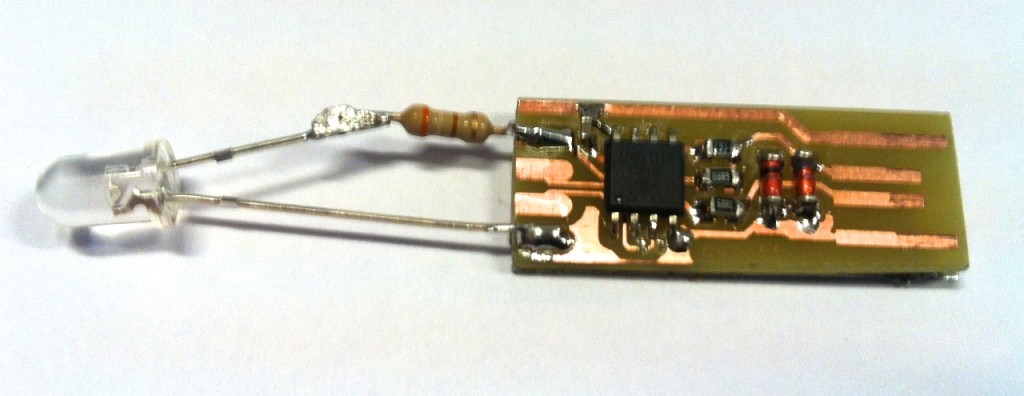
BabyGnsubuino 1: A ridiculously small Arduino with USB interface and/or MIDI connection
While geeking around with Attinies during Summer 2012 our friend from the SGMK network, Michi Egger a.n.y.m.a., developed a nice bootloader for the attiny85 to turn it into a USB-programmable device using the Arduino IDE, that can be set as USB-Midi for bi-directional communication or USB-HID device, such as keyboards. The device uses minimal amount of parts and could cost less than 2 $.
Because of the history of Michi’s developments for the GNUSB, he named it BabyGnusbuino. Together with our friends in Indonesia, Lifepatch et al., we used it for many applications, turbidity meters, 8Bit MixTapes, MIDI-Theremins and other low-cost microcontroller educational activities, such as the CocoMake7. Thx to Budi who further developed the hardware compatibility and made it easy to install on all operating systems! Sometimes names as TeenyRiot. Meanwhile other similar platform have been developed such as AdaFruit’s Trinket or from the Hackerspace in Tel Aviv the ATtami.
Summer 2013: Kafi-Schnapps Detektor, Daphnia2Midi Converters and Bug-is-a-VJ (in a cave)
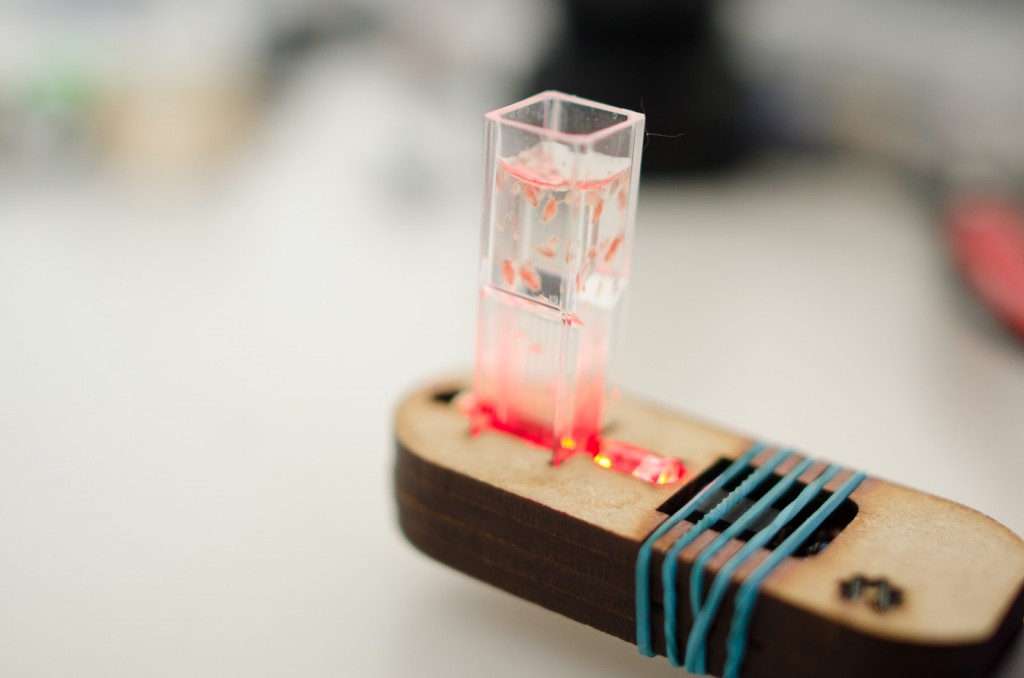 Using the device as a MIDI allows you to control synthesizers and make some nice experimental music, just add a few daphnia from your local pond
Using the device as a MIDI allows you to control synthesizers and make some nice experimental music, just add a few daphnia from your local pond
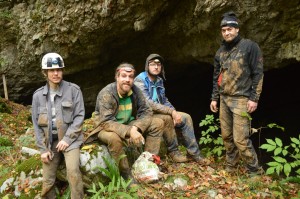 Going to the caves… Caves are nice! During the Summer of 2013, besides laser micro-life projectors, we explored various ideas of sonification of life forms and site-specific performances. Such as small device like the MIDI-Turbidity meter allows you to very easily put some water sample into it and “hear” the motion of small insects and microorganisms. As they pass the light they’ll cast some shade onto the sensor and the data is sent at high rate to your computer as a MIDI signal. During the Cave Safari’s in Slovenia we used the devices inside and outside the cave to create various sounds and even used the cuvettes as visual elements for bio-visualizations.
Going to the caves… Caves are nice! During the Summer of 2013, besides laser micro-life projectors, we explored various ideas of sonification of life forms and site-specific performances. Such as small device like the MIDI-Turbidity meter allows you to very easily put some water sample into it and “hear” the motion of small insects and microorganisms. As they pass the light they’ll cast some shade onto the sensor and the data is sent at high rate to your computer as a MIDI signal. During the Cave Safari’s in Slovenia we used the devices inside and outside the cave to create various sounds and even used the cuvettes as visual elements for bio-visualizations.
Turbidity BugVJ session outside Mačkovica from dusjagr on Vimeo.
Autumn 2013: Connecting it to the Phone, FSK geeking and soft modem library
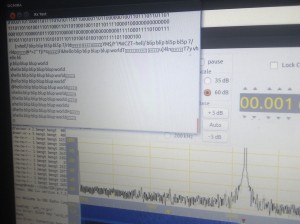 With the idea to connect the turbidity meter directly to a smartphone we were looking into that audio port, using the microphone input for a serial connection “bleeep bluuurp blepblep bleeeeep pip” with the FSK method and some library we ported to the attiny85 with Bengt. By using the microphone input it’s possible to circumvent all restrictions of published “official” apps on all those stores out there. The microphone can be read and the serial FSK signal de-coded using modern webaudio tools and HTML5 directly in your browser. Similar approaches have recently been investigated on PublicLab using WebJack.
With the idea to connect the turbidity meter directly to a smartphone we were looking into that audio port, using the microphone input for a serial connection “bleeep bluuurp blepblep bleeeeep pip” with the FSK method and some library we ported to the attiny85 with Bengt. By using the microphone input it’s possible to circumvent all restrictions of published “official” apps on all those stores out there. The microphone can be read and the serial FSK signal de-coded using modern webaudio tools and HTML5 directly in your browser. Similar approaches have recently been investigated on PublicLab using WebJack.
Winter 2014: DIY-SATW – Workshop development on building / prototyping photospectrometers as means of interdisciplinary education for students
To introduce the DIY and hacking approach into a creative teaching environment we had a collaboration with SATW and FHNW to develop the idea further on the example of building your own turbidity meter, or more specific in this case a spectrophotometer. The development workshop is documented on the wiki. Through an open process the students are introduced both in some basics of electronics and microcontrollers (arduino) as well as into bio-analytics using enzymatic assays.
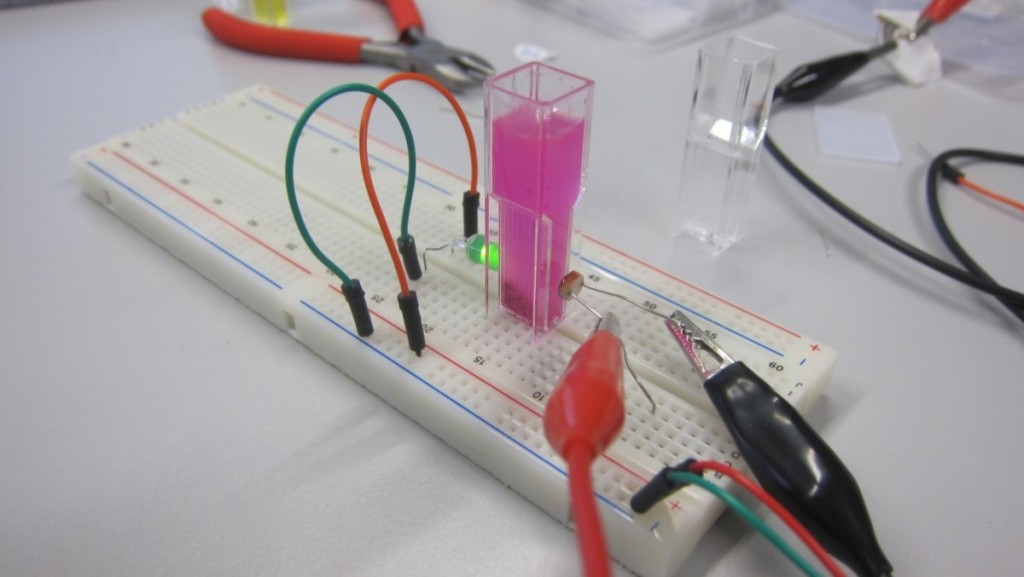 . Inspired by M. Resnick’s educational research paper “Beyond Black Boxes: Bringing Transparency and Aesthetics Back to Scientific Investigation”.
. Inspired by M. Resnick’s educational research paper “Beyond Black Boxes: Bringing Transparency and Aesthetics Back to Scientific Investigation”.
Spring 2014: Nyamuk Synthesizers and low-cost photometers, Yogyakarta
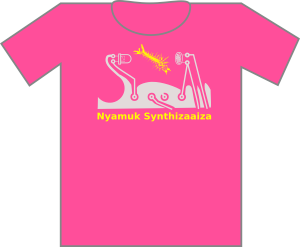 Throughout our visit to Yogyakarta and the collaborations with UGM we have explored the use of such low-cost laboratory instruments for local issues, student training, water quality measurements and monitoring of fermentation process. With the Babygnusbuino we were aiming at producing the turbidity meter aka OD-measurement using all locally available electronic parts and etching the boards ourselves. But where to get the cuvettes? Just use a box of Tic-Tac!
Throughout our visit to Yogyakarta and the collaborations with UGM we have explored the use of such low-cost laboratory instruments for local issues, student training, water quality measurements and monitoring of fermentation process. With the Babygnusbuino we were aiming at producing the turbidity meter aka OD-measurement using all locally available electronic parts and etching the boards ourselves. But where to get the cuvettes? Just use a box of Tic-Tac!
And of course… we made some synthesizers with it! The Nyamuk Synthesizer uses mosquita larvae to create crazy 8bit tunes, no Midi or computer needed. For simple readout we added a LED bar and dedicated chip. And yes, you can also buy the T-shirt!
Nyamuk Synthisaaaiza! from dusjagr on Vimeo.
Autumn 2014: DIY-SATW – developing the Turbidity Kit and educational materials
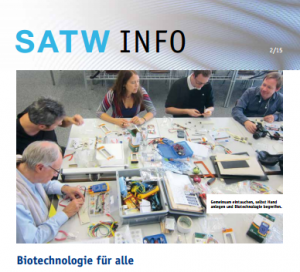 The educational developments have been further intesified and we published an article in the SATW info, and also an educational curriculum to be used by the mentors of such collaborative learning environments. The article from SATW Info 2/15 – Biotechnology for all / DIY in bioanalytics: doing and grasping it yourself is available for download in German, English and French. The pedagogic concept and educational kits were developed during a project funded by the Swiss Academy for Engineering Sciences (SATW), together with hackteria, M. Dusseiller and U. Gaudenz, and FHNW School for Lifesciences, Dr. D. Gygax, during a workshop with an interdisciplinary group of participants.
The educational developments have been further intesified and we published an article in the SATW info, and also an educational curriculum to be used by the mentors of such collaborative learning environments. The article from SATW Info 2/15 – Biotechnology for all / DIY in bioanalytics: doing and grasping it yourself is available for download in German, English and French. The pedagogic concept and educational kits were developed during a project funded by the Swiss Academy for Engineering Sciences (SATW), together with hackteria, M. Dusseiller and U. Gaudenz, and FHNW School for Lifesciences, Dr. D. Gygax, during a workshop with an interdisciplinary group of participants.
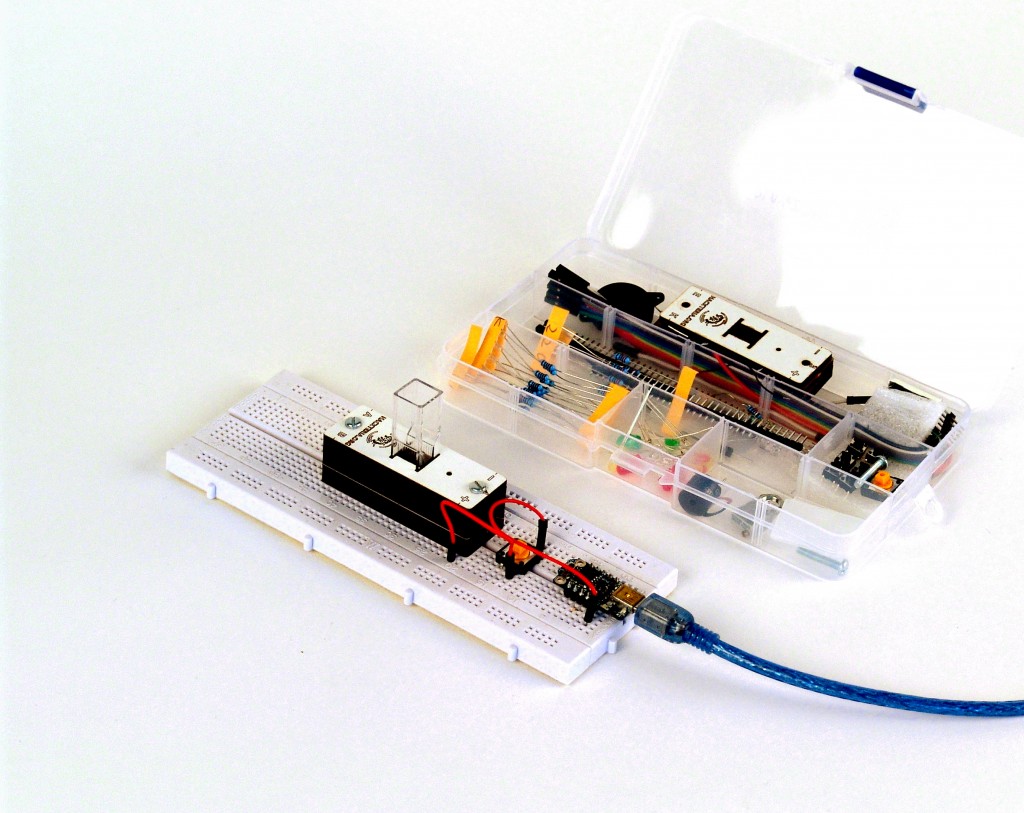 Turbidity Kit, getting started with DIY electronics prototyping and biological assays
Turbidity Kit, getting started with DIY electronics prototyping and biological assays
Autumn 2015: Using the turbidity meter for real world OD-measurements during HTGAA
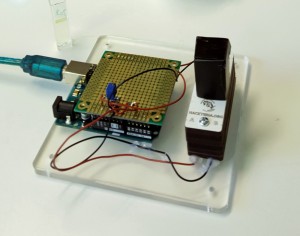 During the participation of GaudiLabs at HTGAA we further developed the code to get more reproducible and calibrated OD measurments, needed to follow growth curves of e.coli bacteria getting ready for transfection. To get the real OD values additional functions have been added to the code, measuring of the calibration value (clear water), logarithmic calculation of the absorbed light intensity according to the Beer-Lambert law and then outputting the value as keyboard strokes directly into your spreadsheet. All the devices needed are well documented on Gaudi’s final project “How to set up a microbiology lab” and other interesting summaries can also be found on the hackteria wiki.
During the participation of GaudiLabs at HTGAA we further developed the code to get more reproducible and calibrated OD measurments, needed to follow growth curves of e.coli bacteria getting ready for transfection. To get the real OD values additional functions have been added to the code, measuring of the calibration value (clear water), logarithmic calculation of the absorbed light intensity according to the Beer-Lambert law and then outputting the value as keyboard strokes directly into your spreadsheet. All the devices needed are well documented on Gaudi’s final project “How to set up a microbiology lab” and other interesting summaries can also be found on the hackteria wiki.
Spring 2016 Going to Bavaria: Trübheitsmessgerät
 Invited by our friends from Make Munich we made a whole series of kits like the Trübheitsmessgerät, adapting a more German or Bavarian style of the laser-cut devices. This edition fits nicely on the breadboard and allows prototyping your own measurement setup, changing resistors and learning about the inner workings of photometric measurements. You can find the laser cutting files on thingyverse.
Invited by our friends from Make Munich we made a whole series of kits like the Trübheitsmessgerät, adapting a more German or Bavarian style of the laser-cut devices. This edition fits nicely on the breadboard and allows prototyping your own measurement setup, changing resistors and learning about the inner workings of photometric measurements. You can find the laser cutting files on thingyverse.
Summer 2016… AND NOW THIS: TurbiGnUSB by Gaudi Industries & Söhne Inc.
.
Continue following the developments on GitHub











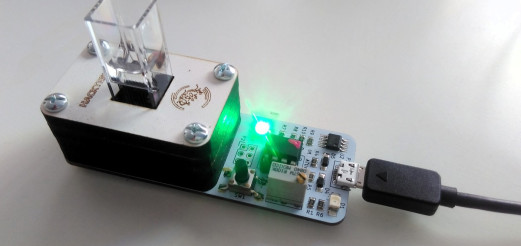




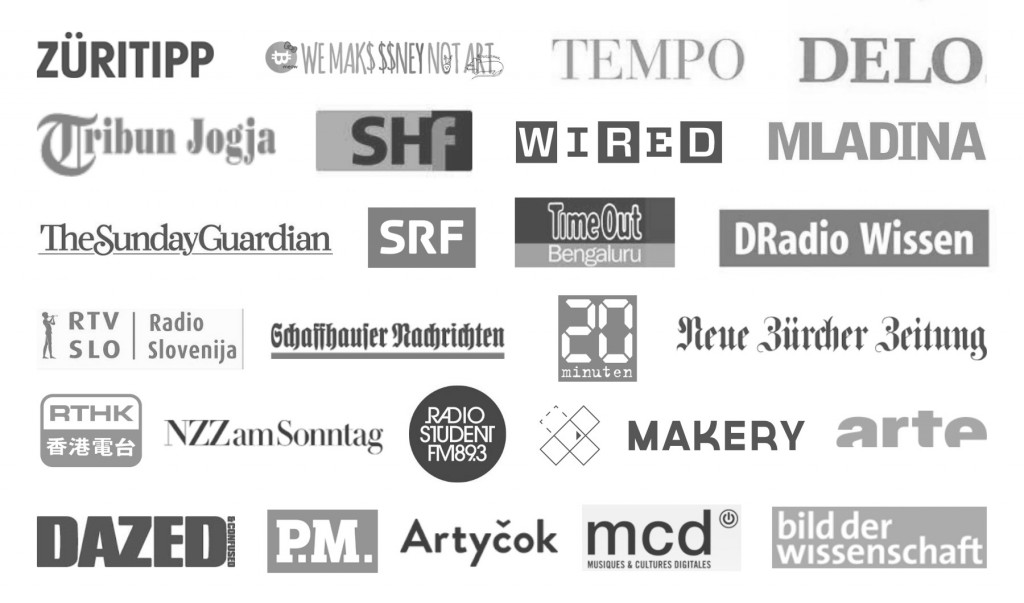
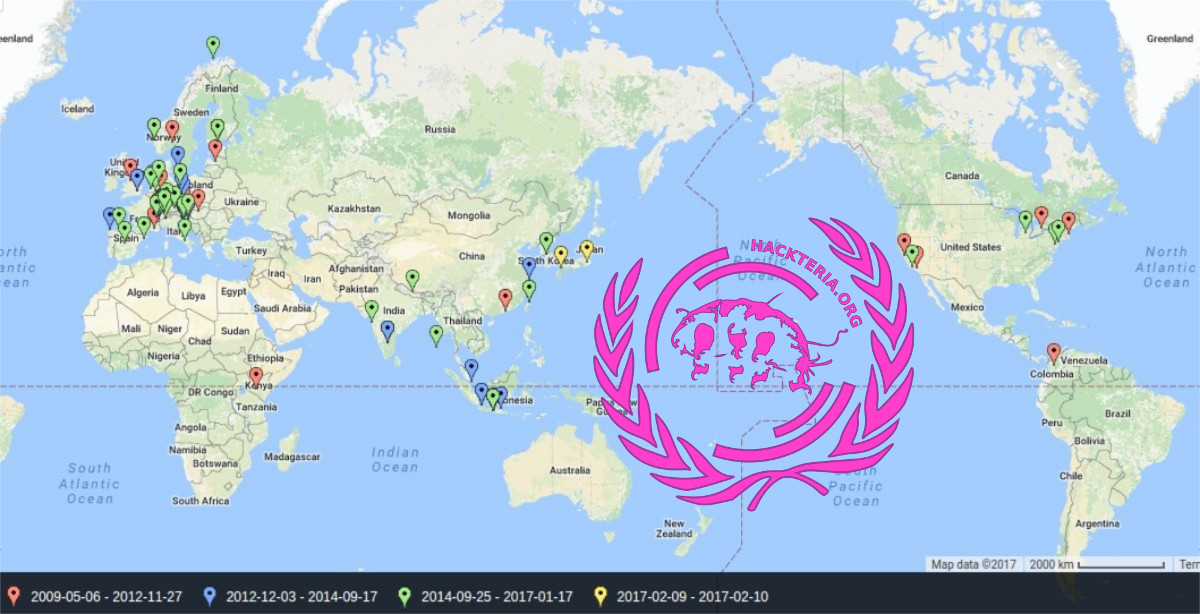

It‘s quite in here! Why not leave a response?